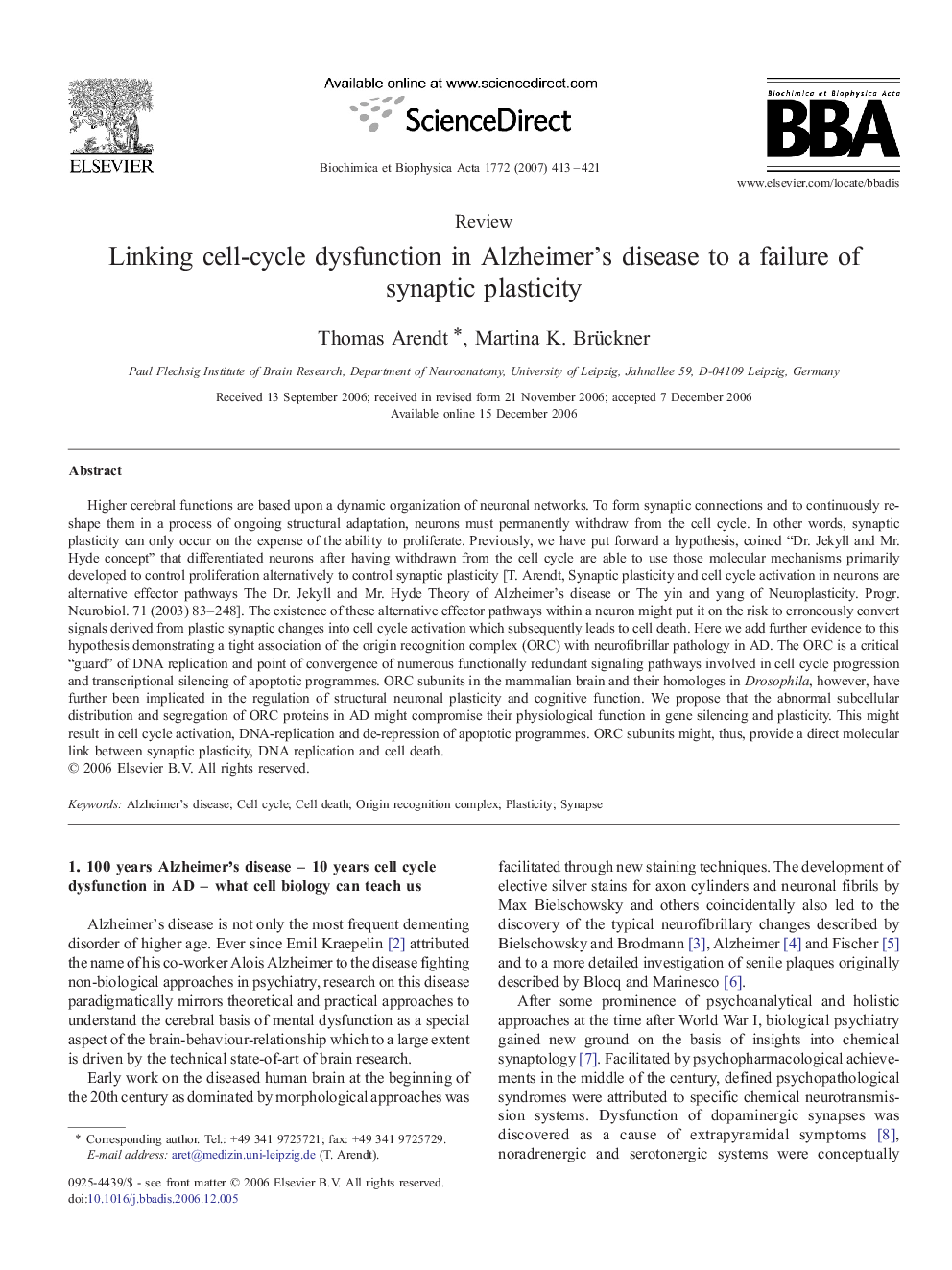| کد مقاله | کد نشریه | سال انتشار | مقاله انگلیسی | نسخه تمام متن |
|---|---|---|---|---|
| 1905818 | 1534742 | 2007 | 9 صفحه PDF | دانلود رایگان |

Higher cerebral functions are based upon a dynamic organization of neuronal networks. To form synaptic connections and to continuously re-shape them in a process of ongoing structural adaptation, neurons must permanently withdraw from the cell cycle. In other words, synaptic plasticity can only occur on the expense of the ability to proliferate. Previously, we have put forward a hypothesis, coined “Dr. Jekyll and Mr. Hyde concept” that differentiated neurons after having withdrawn from the cell cycle are able to use those molecular mechanisms primarily developed to control proliferation alternatively to control synaptic plasticity [T. Arendt, Synaptic plasticity and cell cycle activation in neurons are alternative effector pathways The Dr. Jekyll and Mr. Hyde Theory of Alzheimer's disease or The yin and yang of Neuroplasticity. Progr. Neurobiol. 71 (2003) 83–248]. The existence of these alternative effector pathways within a neuron might put it on the risk to erroneously convert signals derived from plastic synaptic changes into cell cycle activation which subsequently leads to cell death. Here we add further evidence to this hypothesis demonstrating a tight association of the origin recognition complex (ORC) with neurofibrillar pathology in AD. The ORC is a critical “guard” of DNA replication and point of convergence of numerous functionally redundant signaling pathways involved in cell cycle progression and transcriptional silencing of apoptotic programmes. ORC subunits in the mammalian brain and their homologes in Drosophila, however, have further been implicated in the regulation of structural neuronal plasticity and cognitive function. We propose that the abnormal subcellular distribution and segregation of ORC proteins in AD might compromise their physiological function in gene silencing and plasticity. This might result in cell cycle activation, DNA-replication and de-repression of apoptotic programmes. ORC subunits might, thus, provide a direct molecular link between synaptic plasticity, DNA replication and cell death.
Journal: Biochimica et Biophysica Acta (BBA) - Molecular Basis of Disease - Volume 1772, Issue 4, April 2007, Pages 413–421